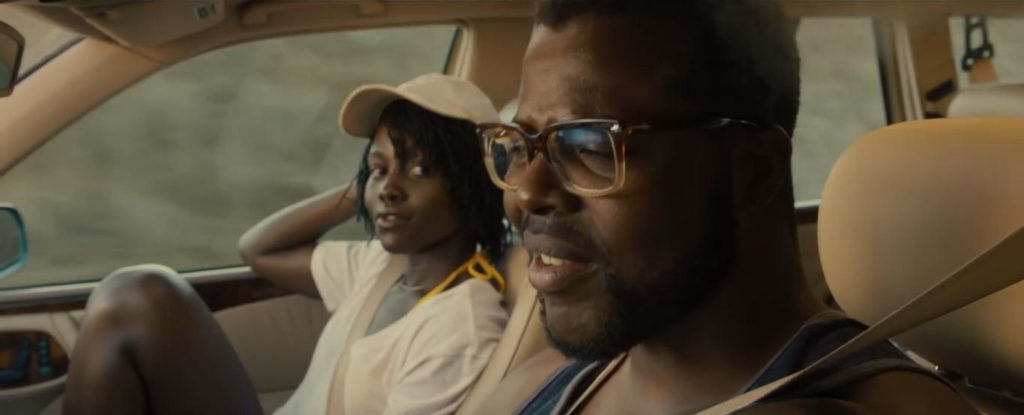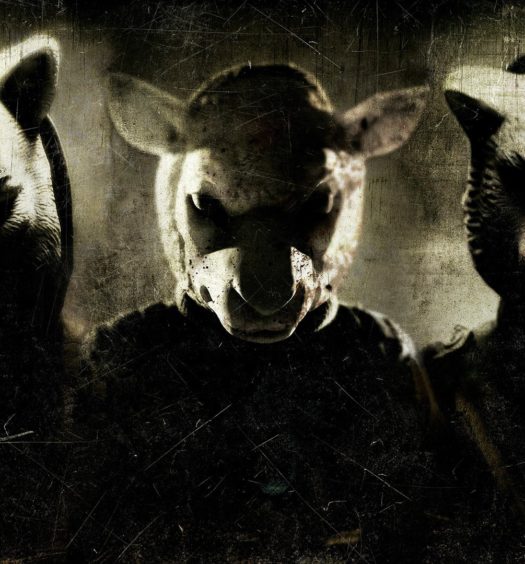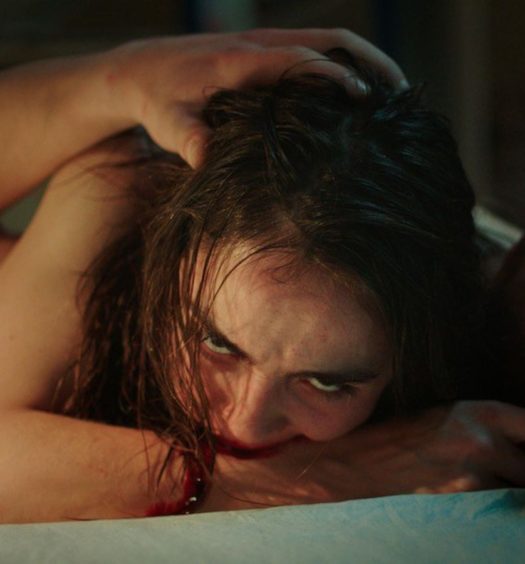Jordan Peele’s sophomore film, Us, is a bit of a Rorschach test. The film is filled with symbolism and intentionally vague at times, enabling the viewer to see and connect with different aspects based on his or her personal experiences. In other words, it’s my jam.
This essay is not meant to be a critique of the film, and I am aware that some of what I took from it was probably not there. I also know that in order for my analogy to work, I have to let go of some of what IS in the film, for example, the nature of what The Tethered are in the first place. And I’m OK with that. I watch movies to feel something. To be moved. And sometimes I have to let go and just allow the film to carry me where I need to go. That’s ok with me. What I get out of these experiences is worth the cost of not being able to explain the logic of the film.

A woman dealing with PTSD and overcoming it (or not) in order to move on with her life
I imagine that everyone who watches Us will interpret it differently. Part of the genius of the film is that Peele gives us just enough to see what works for us but not enough to drive us in a particular direction. And I am grateful for that. What I see when I watch this movie is a woman dealing with PTSD and overcoming it (or not) in order to move on with her life.
It’s not surprising that this is what I took from the film, given that I suffer from the condition. I am currently in therapy, and it is helping. I have it. I’ve had it for years but was only recently diagnosed. Just like Adelaide, it had been living dormant in me. Affecting everything but just under the surface.
Post-traumatic stress disorder, or PTSD, is a mental health condition brought on by a traumatic event. I’m not an expert in the science or treatment, but I know what it feels like to live with. I also want to make clear that I am not speaking for anyone else. These are my personal observations, connections, and thoughts. This story figuratively mirrors my own so much that I was moved to tears.

She learns that darkness lives just under the surface of every situation
Adelaide experiences a traumatic event as a child at an amusement park. In a house of mirrors, she learns that darkness lives just under the surface of every situation. She comes face to face with that darkness, and like so many of us, she does not come back the same person. She may have escaped, but she will live with the shadow of that darkness for the rest of her life. Even if she is able to forget, she will truly never forget.
We see that Adelaide has difficulty connecting and interacting with others, saying that sometimes just sitting and talking is difficult. It can be hard to open up enough to make small talk. Trusting someone, even a loved one, enough to talk about deeper things can be terrifying. She does reach out to her husband, Gabe, about a dark cloud hanging over her. She tells him that she is uncomfortable and wants to leave the environment that has triggered her.
Gabe responds in the expected way. Positively, but he just doesn’t seem to understand. And how could he? He hasn’t seen the darkness she has. When both families face off, he offers them his possessions and, hilariously, his new boat. He’s trying to solve the problem in the way that makes sense with his experiences. Adelaide asks him to stop bargaining several times because she feels the depth of the situation and knows that explaining the problem away doesn’t work. It must be understood and faced on its own terms.

She seems most at ease when she’s in some type of vehicle
We get the sense that Adelaide clings to safe spaces like her ballet studio and family home. She seems most at ease when she’s in some type of vehicle, even pointing out that the Tylers’ home is not safe, but their car is. Vehicles are not only controlled environments, but a way to escape at a moment’s notice. It was not until I started writing this that I realized cars are safe spaces for me as well. The constant movement is soothing as are the changing focal points and the option to look out the window rather than connect with fellow passengers.
Cars give us an excuse to sit quietly for an extended amount of time. I’ve found tremendous relief in long car rides, and they’re often what I look forward to most about a trip. If I’m feeling particularly anxious, I will sometimes drive a lap around my block. While we are in transit, we can focus on the destination without actually having to process it, and we can leave the past and all its baggage behind. We are in a state of active rest.

It is in this ambulance that she lets her guard down
The family ultimately takes refuge and escapes in an ambulance, a vehicle designed to heal (and we can’t forget the toy ambulance used as a means of escaping another situation). It’s not until both family cars have been destroyed that Adelaide must go down into the tunnels and face her past. When there is nowhere left to hide. It is in this ambulance that she lets her guard down long enough to show her true self to her son, Jason. For better or worse.
Throughout the film, we see that Jason also retreats inward, literally behind a mask. He is the one in the underworld with her, seeing her at her lowest point. And he comes back out with her. Whether he trusts her or not and whether she is deserving of that trust is a larger issue. But he has now suffered his own trauma and, justified or not, guards himself.

A remnant of the voice she lost to the darkness
Adelaide’s final battle with Red is moving and beautiful because she is really fighting with herself. Wrestling with the shadow that has been hanging over her life ever since her trauma. The shadow is always one step ahead, effortlessly gliding away from blows Adelaide strains to land. When she finally breaks Red’s neck, Adelaide lets out a primal scream that brought tears to my eyes.
As women, we are told that we must repress ourselves. Deal with our problems in secret lest they become too burdensome to others. We must carry the shame of our suffering silently. Even Red’s voice is damaged. She has the ability to speak, but her voice is altered. Whispered. Adelaide’s wailing scream after finally saying ENOUGH to the pain that has been haunting her is heartbreaking and empowering. A remnant of the voice she lost to the darkness. She has taken the final step in breaking free from the shadow of her past. Or has she? Does it ever go away? Or do we just learn to hide it better?
After first confronting Adelaide, Red describes going through the motions of a life. Never quite experiencing things fully. I have often felt disconnected from the world. That I am living a shadow of a life as a tourist or observer. Watching others live fully because they have not seen the darkness that I have. But I am trying to break free of my dark cloud. Engaging with the world after trauma can be terrifying, but if I can overcome my darkness, maybe I can step out of the shadows.
































